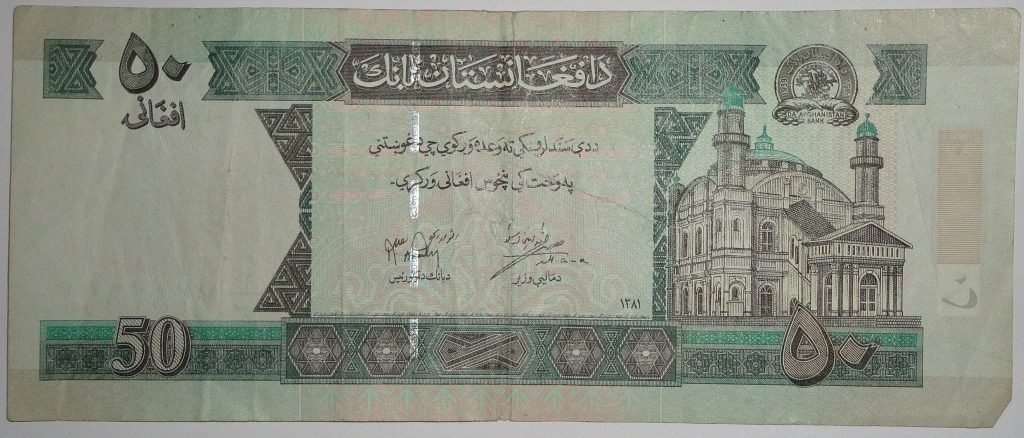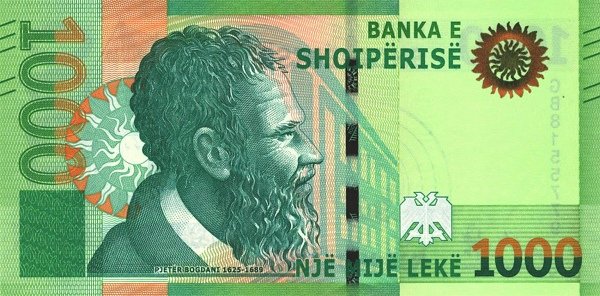Table of Contents:
- Introduction
- Afghan Rupee: The Early Currency of Afghanistan
- The Birth of the Afghan Afghani
- Decimalization and Modernization
- Security Features on Afghan Banknotes
- Afghan afghani exchange rate
- Questions and answers
- Related Posts and Additional Resources
Introduction
The currency of a nation reflects its economic history, cultural identity, and political developments. we embark on a historical exploration of Afghanistan’s currency, from its early days to the present.
The official currency of Afghanistan is Afghani. The Afghani currency is managed by the nation’s central bank, Da Afghanistan Bank (DAB), and printed in Poland.
The symbol for the Afghan Afghani is “؋” r Af (singular) and Afs (plural).
The currency code for the Afghan Afghani is “AFN.” This three-letter code is used to identify the currency in financial and international exchange systems, such as currency converters, bank transactions, and international trade.
The afghani is primarily represented in banknotes of various denominations, such as 1, 2, 5, 10, 20, 50, 100, 500, and 1000 afghanis. These banknotes feature various designs and symbols significant to Afghan culture and history. Afghanistan did issue coins in denominations of 1, 2, and 5 afghanis.
Afghan Rupee Era (1891-1925)
The Afghan rupee was the currency used in Afghanistan during the late 19th and early 20th centuries. Here is some information about the Afghan rupee:
The Afghan rupee was adopted as the official currency of Afghanistan in the late 19th century.
The Afghan rupee was initially linked to the Indian rupee, which was the currency used in British India at the time.
The Afghan rupee was divided into smaller units called annas.

Transition to the Afghan Afghani (1925):
Establishment of the Afghan Afghani as the national currency in 1925. Ghazi Amanullah Khan replaced the Afghan rupee that was used in 1891. Replacement of the Afghan rupee at a conversion rate of 1 Afghan to 1.5 rupees.
Decimalization and Modernization (2002):
Currency reform in 2002 led to the decimalization of the Afghani. Introduction of the pul as a subunit, with 1 Afghani equivalent to 100 puls. Alignment with international standards for simplified monetary transactions.
Security Features on Banknotes:
Implementation of various security features to combat counterfeiting. Introduction of watermarks, security threads, microprinting, and other advanced techniques. Continual efforts to enhance the security and integrity of Afghan banknotes.
To obtain the Afghan afghani exchange rate, you have a few options:
Online Currency Converters: You can use various online currency converter websites or mobile apps that provide up-to-date exchange rates. Examples include XE.com, OANDA, and Google Finance.
Financial Institutions: Banks and currency exchange services often provide exchange rate information either on their websites, through customer service representatives, or via their mobile apps. You can contact your local bank or visit their website to find out the current exchange rate for the Afghan afghani.
Central Bank Websites: The Central Bank of Afghanistan, also known as Da Afghanistan Bank (DAB), may provide the official exchange rate on its website. Checking the central bank’s website can give you accurate and reliable information regarding the exchange rate.
Note: Keep in mind that exchange rates can fluctuate, and it’s advisable to double-check the rates at the time of your transaction for the most accurate information.
Questions and Answers:
When original afghani currency was introduced in?
1925
When afghani currency was replaced during the era of?
Ghazi Amanullah Khan
What is the code of Afghanistan currency?
AFN
What is the symbol of Afghanistan currency?
Af (singular) and Afs (plural)
What is the name of the Central bank of Afghanistan?
Da Afghanistan Bank
What is the subunit of Afghanistan currency?
pul

